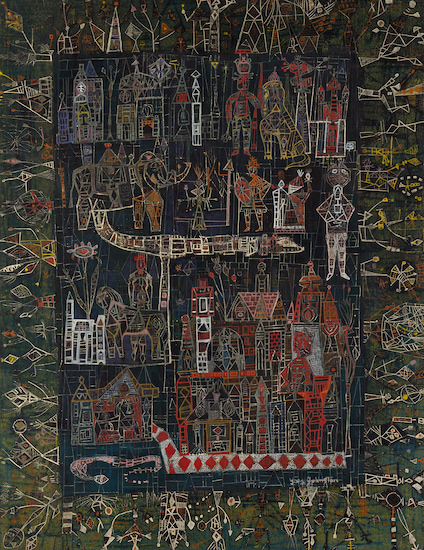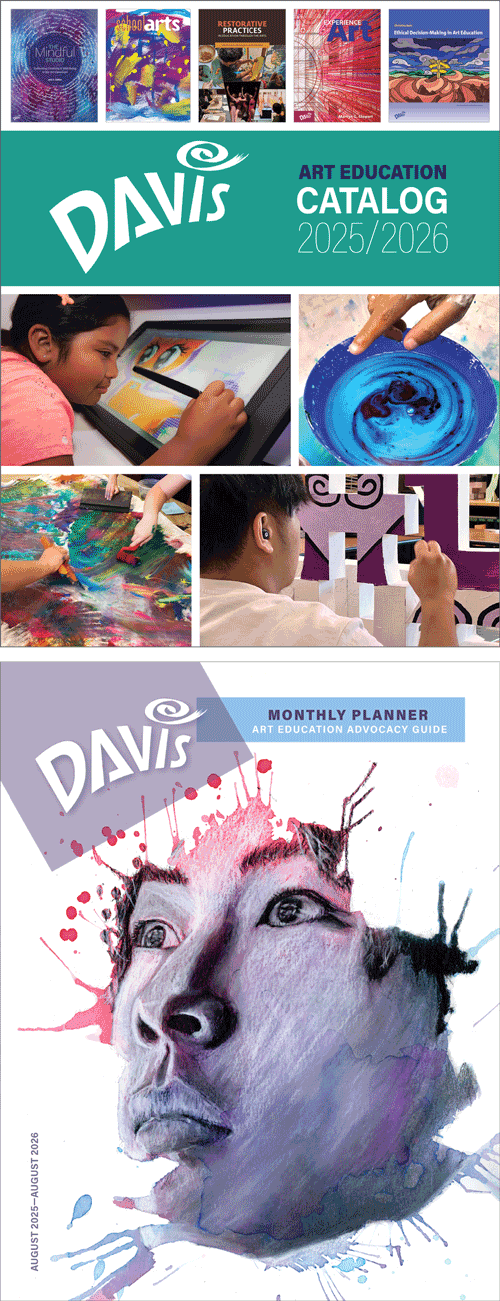Artist Birthday: Ynez Johnston
Ynez Johnston’s unique style blends modernism and ancient art forms from her travels to Italy, Mexico, India and Nepal. Johnston also created three dimensional pieces in collaboration with her husband, poet and novelist John Berry (1914–1972).
Artist birthday for 12 May: Ynez Johnston (1920–2019, United States)
Ynez Johnston was a unique modernist with a personal, lyrical vision combining many elements of other world cultures and past Western modernism.
 |
| Ynez Johnston, Dark Jungle, 1950. Casein on cardboard, 60.6 x 47 cm. The Museum of Modern Art, New York. © 2025 Artist or Estate of Artist. (MOMA-P2657) |
Dark Jungle is very representative of the similarity of Johnston's forms to those of Paul Klee (1879–1940), particularly in the vertically arranged space with cube-like structures, child-like stick figures, and a type of scratch-away from a dark ground to reveal bright colors underneath. In Johnston's work there are recurring glyphs, composite forms and fanciful creatures which seem to describe some sort of pictographic language that eludes legibility. Her paintings are visibly tactile, an enigmatic symbol vocabulary that describes legend-like adventures and mysterious figures of imaginary worlds. Dark Jungle is rich in symbols of Johnston’s many travels. There are figures from African textiles, such as the crowned lion, an elephant from southern Asia, and many forms around the borders that resemble African or Native American mystical symbols.
Throughout the history of American art, there have been artists whose vision is so personal that it can not be easily fit into a category. Examples of this in the 1800s would be David Gilmour Blythe (1815–1865), John Quidor (1801–1881), Ralph Albert Blakelock (1847–1919), and Albert Pinkham Ryder (1847–1917). While their vision was unusual, none of these artists ever truly strayed from the American naturalistic tradition.
In the 1900s, after the advent of and acceptance for abstraction in American art, many artists with intense, personal visions were free to explore these modes of expression, inspired by their travels, reading, or a combination of cross-cultural art historical influences. These personal visions span the range of total abstraction, to representational abstraction, regardless of what the current “trends” in American art are.
Ynez Johnston was born in Berkeley, California, where the fog and mystery of San Francisco bay would be foundational for her dreamy aesthetic and interest in expressing exotic adventures. As a child she showed artistic tendencies, taking weekend art classes as the California College of Arts and Crafts in Oakland. She obtained a BFA in 1941 from UC Berkeley, where she learned about the art of European modernists such as Pablo Picasso (1881–1973), Joan Miro (1893–1983), Klee, and Jean Arp (1886–1966).
It was perhaps the influence of Klee that was the most evident in her artwork. An award to visit Mexico from 1941 to 1943 excited in her a fervor for travel, and she subsequently visited many exotic locales including Nepal, India, and Cambodia along with Spain and Italy. She achieved an MFA from Berkeley in 1947.

Comments